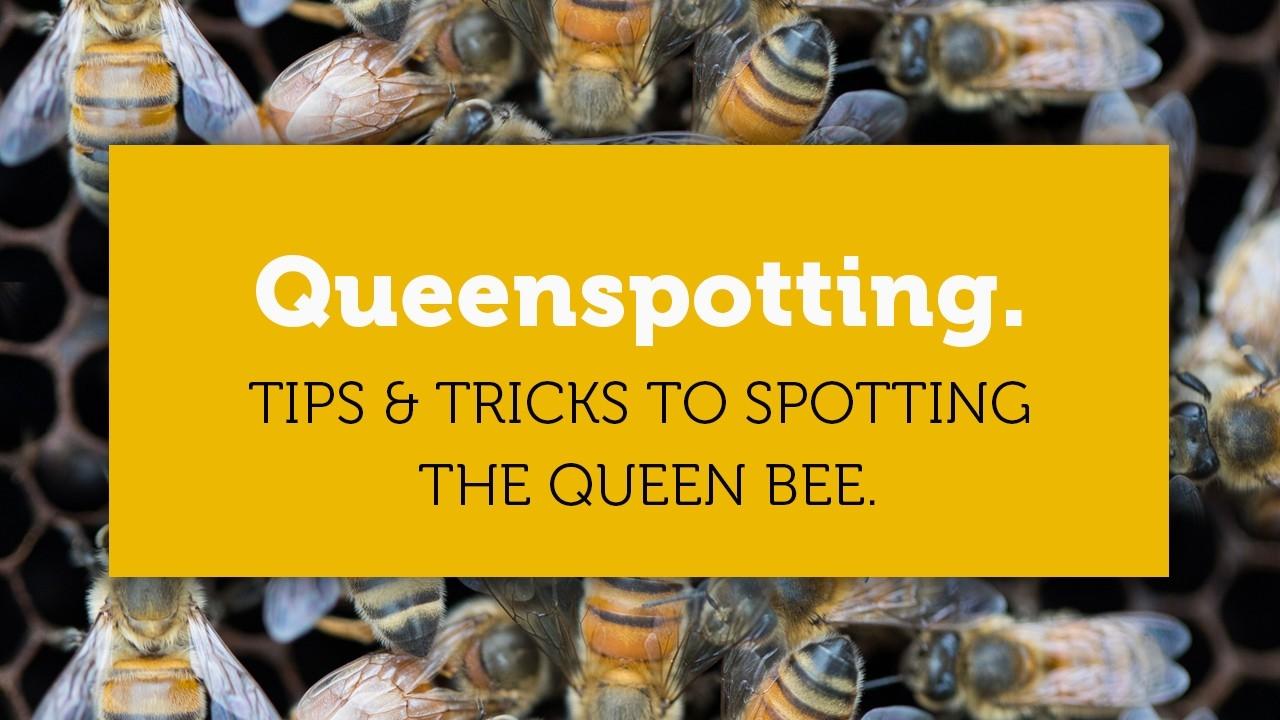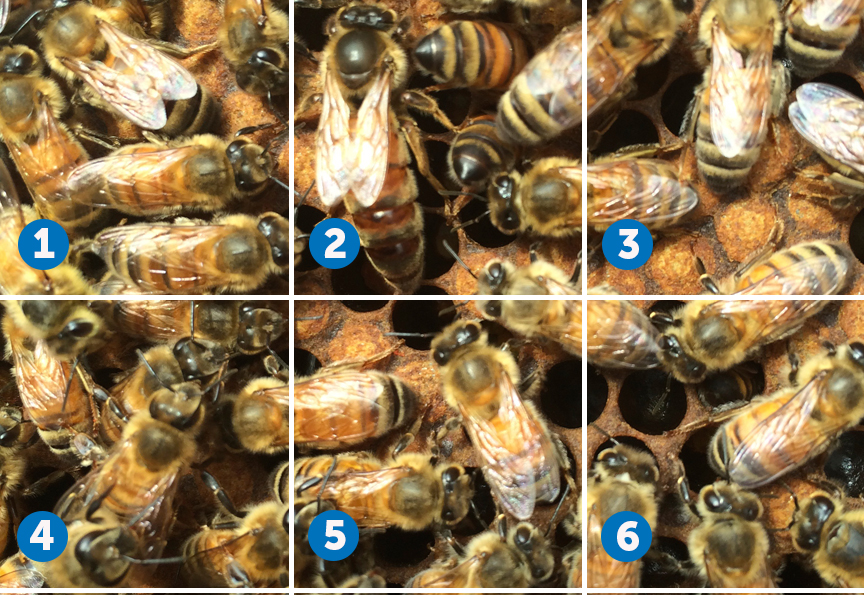
Queenspotting Made Easy. Tips & Tricks to Spotting the Queen Bee.
Nov 15, 2020My first year keeping bees, I saw the queen twice - the day I put her cage in the hive and the day I released her from the cage. That was it! All year.
I tried to find her, but it wasn't a big priority of mine. As Spring turned into Summer, and the hive got considerably bigger, it seemed almost impossible to find her among the 40,000+ bees.
Three years later I got a job working for a commercial bee farm. My first week they were requeening their farm of 2,500 hives. That was 2,500 queens we had to find and kill. It was an awful week and I now don't requeen my own hives unless I absolutely have to. It's something I just can't get myself to do again, but enough about my traumatic queen beheading experience...
The owner of this farm was a 4th generation beekeeper. He taught me a bunch of tricks to spotting the queen that work pretty well and I'm now going to share these queenspotting tricks with you!
How to Spot the Queen in Your Beehive
1) Start in the uppermost box and work your way down. Queens often jump off the frame and go to a neighboring frame or to one below. Once you check the uppermost box, put it aside and open the next box.
2) Spend 5 seconds looking for the queen on one side of the frame. Then turn the frame over and spend 5 seconds looking on the other side.
This is crucial! If you're having trouble spotting your queen, it's probably because she's skittish and hides when you pull out a frame.
If you spend too long looking for her on one side and she's on the other, she has too much time to hide before you flip the frame over. Or, more often, she's run to the edge of the frame so when you flip it over, she's on the opposite side already.
I've seen it MANY times. They like to hang out on the side of the frame, where the wood is and run back and forth from one side to the other depending on which side is facing up towards the sun.
I've spotted the queen many times and then turned around to show a student. As soon as I flip the frame around and point to her, she's on the other side! I flip the frame over, and she's back to the original side. Literally, I've flipped the frame over 4+ times before she stands still long enough for them to see her. Keeping bees for 10 years really helped prepare me for being the mother of a 2 year old. Bees and toddlers have a lot in common.
Ready to be a beekeeper?
Enroll in our online class, Beekeeping for Beginners. We'll show you how with easy-to-follow video lessons.

3) If you see eggs on the frame, especially if they're standing straight up, spend some extra time looking at the frame. First, spend just 5 seconds looking at each side, but then look a little closer.
4) When looking for the queen, look at the frame in thirds and let your eye gravitate towards something that looks different from the rest. Don't look at each individual bee. You'll notice a lot of drones at first, but remember that they have large eyes, are bean shaped and have a round butt. If it's early Spring, there probably aren't any drones in the hive, but in the Summer, you will have quite a few.
* Watch the video at the top of this article to try some queen spotting. I show you some frames and give you a chance to find her.

Photo of a marked queen bee.
Some Extra Queenspotting Tips
- Don't use too much smoke. This can sometimes cause the queen to hide before you even pull a frame out of the box.
- Order a marked queen your first few years to help you spot the queen. This means that the beekeeper will put a dot of paint on her back. It makes queenspotting a lot easier.
- Remember what your queen looks like. Queens have different colorings and striping patterns. Once you spot the queen, take a mental picture of what she looks like. Is she all black, caramel colored, have stripes? I had a queen that was always difficult to spot until I noticed that she was almost entirely black. She was blending in with the comb! Once I remembered this and made sure to pay close attention to the frames of dark comb, I found her every time.
- Tip! Don't forget to practice. You can't get good at something if you only do it once a month. Open the hive every 5-7 days and look for the queen every time. Make it your priority to find the queen when you first pull a frame out of your box.
The early Spring, when your hive is small, is the best time to do this because the population is low and there's fewer frames for her to hide on. The only time I wouldn't recommend practicing your queenspotting skills is if it's below 60F. When it's cooler out, you don't want the hive open for long.

Traits of the Queen Bee
You can't spot the queen if you don't know what you're looking for! Here are some common traits of the queen bee and other things to look for:
- The queen bee is approximately 50% larger than the worker bees.
- The queen is considerably longer than the worker bees.
- The queen is often darker in color than the worker bees. She may be a caramel color with black stripes or dark black and brown. She may not have any stripes at all or just a couple at the bottom of her body.
- Queens often walk slower and move differently than worker bees. When you spot your queen, observe how she walks around the frame.
- Sometimes you will see a circle of bees facing the queen. These bees are sometimes referred to as her attendants. Their job is to feed her, groom her and take out her waste.
Learn all about the queen bee and her role in the hive in our article all about the amazing queen bee.
Remember...
You don't have to see the queen when opening your hive. All you need to check for are signs of a healthy queen. This means that you're seeing eggs, larvae and capped brood as well as a healthy laying pattern. A healthy laying pattern is one that has every cell filled with brood. A spotty laying pattern is one that has a lot of empty cells scattered throughout a section of brood.
Keep in mind that if a lot of cells are empty and you see capped brood, the bees might have recently hatched. However, if you see a lot of empty cells scattered throughout the larvae or eggs, the queen may not be very fertile. Don't worry if understand a laying pattern is a little confusing at the moment. I would describe this as intermediate beekeeping and something to jot down in your beekeeping book to learn about later, once you have your bees. We also talk about this in our beekeeping class if you're one of our students.
If you don't have great vision and are having trouble spotting eggs, don't worry! One of my students in our in-person classes was legally blind and she was great at queenspotting. She, actually, spotted the queen before the other students in the class. She said she noticed that the queen walked differently than the rest of the bees.
Times in which you might need to find your queen is if you want to split your hive or replace your queen. When conducting a mite test, you don't need to find the queen, but you want to make sure the frame doesn't have a queen on it before you use the bees on it for your test and so you also need to be able to spot her. Since you don't need to spot the queen every time you inspect the hive, once you've gotten the hang of queenspotting and can find her when needed, give her a break and don't try to find her during the next handful of inspections.
If you want to learn more about the queen bee, Girl Next Door Honey has a new book out all about queenspotting.
Queenspotting Quiz!
#1

#2

#3

#4

#5

This queenspotting video is a lesson from our online beekeeping class, Beekeeping for Beginners. To watch more video lessons & take the queenspotting quiz, sign up for Beekeeping for Beginners and start learning today!
Queen Quiz Answers
#1
#2 Answer: there is no queen in this photo!
#3

#4

#5

More beekeeping videos for beginners:
• Why Every Beginner Beekeeper Should Start with a Langstroth Style Hive
Want to learn more about beekeeping?
Join our newsletter for blog updates, beekeeping videos, sales and contests.




